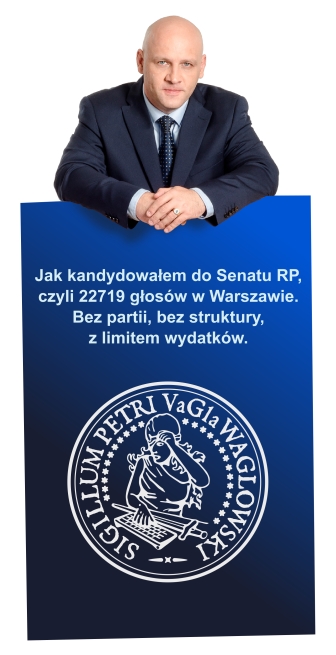"Wizualne okrucieństwo wobec zwierząt" i precyzja prawodawcy a wolność słowa w USA
Poszukujących informacji źródłowej na temat wyroku amerykańskiego Sądu Najwyższego w sprawie materiałów wideo, zawierających materiały przedstawiające dręczone zwierzęta, zainteresują pewnie dane dotyczące samego wyroku. Został wydany 20 kwietnia, dotyczy sprawy United States v. Stevens, w której m.in. sąd analizował zgodność 18 U.S. Code §48 z amerykańską konstytucją. Sąd stosunkiem ośmiu głosów do jednego uznał, że przepisy te są niezgodne z Pierwszą Poprawką, która gwarantuje wolność słowa. Warto pamiętać, że w demokratycznych państwach prawa również wolność słowa może być ograniczona. Aby jednak prawodawca mógł wprowadzić takie ograniczenia muszą być spełnione pewne przesłanki...
Na gruncie polskiej Konstytucji przesłanki te znajdują się w art. 31 ust. 3, zgodnie z którym "Ograniczenia w zakresie korzystania z konstytucyjnych wolności i praw mogą być ustanawiane tylko w ustawie i tylko wtedy, gdy są konieczne w demokratycznym państwie dla jego bezpieczeństwa lub porządku publicznego, bądź dla ochrony środowiska, zdrowia i moralności publicznej, albo wolności i praw innych osób. Ograniczenia te nie mogą naruszać istoty wolności i praw." Jednym z istotnych czynników przy normatywnym manipulowaniu "przy wolności słowa" jest również precyzja ingerencji ustawodawcy w sferę wolności i praw (to zresztą dotyczy nie tylko wolności słowa; por. Stosowanie elektronicznych maszyn wyborczych w Niemczech niezgodne z Konstytucją, albo Rumuński Trybunał Konstytucyjny uznał, że tamtejsza ustawa o retencji danych jest niezgodna z konstytucją). Brak precyzji projektu ustawy była podnoszona również w polskiej dyskusji na temat Rejestru Stron i Usług Niedozwolonych. Zwłaszcza w przypadku projektowania jakichkolwiek przepisów karnych precyzja prawodawcy powinna być zapewniona, a to ze względu na podstawową zasadę prawa karnego: nullum crimen sine lege – nie ma przestępstwa bez ustawy.
Amerykański wyrok dostępny jest w internecie, na stronach Sądu Najwyższego (PDF). Sprawie tej poświęcono również hasło w Wikipedii: United States v. Stevens.
Przepis, którego konstytucyjność została zakwestionowana brzmi:
§ 48. Depiction of animal cruelty
(a) Creation, Sale, or Possession.— Whoever knowingly creates, sells, or possesses a depiction of animal cruelty with the intention of placing that depiction in interstate or foreign commerce for commercial gain, shall be fined under this title or imprisoned not more than 5 years, or both.
(b) Exception. — Subsection (a) does not apply to any depiction that has serious religious, political, scientific, educational, journalistic, historical, or artistic value.
(c) Definitions. — In this section—
(1) the term “depiction of animal cruelty” means any visual or auditory depiction, including any photograph, motion-picture film, video recording, electronic image, or sound recording of conduct in which a living animal is intentionally maimed, mutilated, tortured, wounded, or killed, if such conduct is illegal under Federal law or the law of the State in which the creation, sale, or possession takes place, regardless of whether the maiming, mutilation, torture, wounding, or killing took place in the State; and
(2) the term “State” means each of the several States, the District of Columbia, the Commonwealth of Puerto Rico, the Virgin Islands, Guam, American Samoa, the Commonwealth of the Northern Mariana Islands, and any other commonwealth, territory, or possession of the United States.
Sąd Najwyższy USA uznał, że obrazy (materiały audiowizualne) przedstawiające okrucieństwo wobec zwierząt nie są, jako klasa, kategorycznie chronione przez Pierwszą Poprawkę. Wprowadzając ograniczenia wolności słowa prawodawca powinien jednak zważyć jakie korzyści i zagrożenia są związane z określoną ingerencją prawodawczą. Oceniając przepisy 18 U.S. Code §48 Sąd Najwyższy zauważył pewien brak precyzji prawodawcy, który definiując pojęcie "wizualnego okrucieństwa wobec zwierząt" ("depiction of animal cruelty") nie przewidział w takiej definicji, by przedstawiane zachowanie było okrutne. W efekcie przepisy karne wprowadzane ww. nowelizacją obejmują swoim zakresem przedstawianie również zwierząt w dowolny sposób ułomnych, okaleczonych, rannych lub martwych. Skoro ustawa nie rozróżnia powodów, dla których przedstawianie obrazów okaleczonych zwierząt miałoby być penalizowane, przepisy te są sprzeczne z zasadą wolności słowa. Warto jednak oczywiście przeczytać całe uzasadnienie tej tezy:
Section §48 is substantially overbroad, and therefore invalid under the First Amendment. Pp. 5–20.
(a) Depictions of animal cruelty are not, as a class, categorically unprotected by the First Amendment. Because §48 explicitly regulates expression based on content, it is “ ‘presumptively invalid,’ . . . and the Government bears the burden to rebut that presumption.” United States v. Playboy Entertainment Group, Inc., 529 U. S. 803, 817. Since its enactment, the First Amendment has permitted restrictions on a few historic categories of speech—including obscenity, defamation, fraud, incitement, and speech integral to criminal conductthat “have never been thought to raise any Constitutional problem,” Chaplinsky v. New Hampshire, 315 U. S. 568, 572. Depictions of animal cruelty should not be added to that list. While the prohibition of animal cruelty has a long history in American law,there is no evidence of a similar tradition prohibiting depictions of such cruelty. The Government’s proposed test would broadly balancethe value of the speech against its societal costs to determinewhether the First Amendment even applies. But the First Amendment’s free speech guarantee does not extend only to categories of speech that survive an ad hoc balancing of relative social costs andbenefits. The Amendment itself reflects a judgment by the Americanpeople that the benefits of its restrictions on the Government outweigh the costs. New York v. Ferber, 458 U. S. 747, distinguished. Pp. 5–9.
(b) Stevens’s facial challenge succeeds under existing doctrine. Pp. 9–20.
(1) In the First Amendment context, a law may be invalidated asoverbroad if “a ‘substantial number’ of its applications are unconstitutional, ‘ “judged in relation to the statute’s plainly legitimatesweep.” ’ ” Washington State Grange v. Washington State Republican Party, 552 U. S. 442, 449, n. 6. Stevens claims that common depictions of ordinary and lawful activities constitute the vast majority of materials subject to §48. The Government does not defend such applications, but contends that the statute is narrowly limited to specific types of extreme material. Section 48’s constitutionality thusturns on how broadly it is construed. Pp. 9–10.
(2) Section 48 creates a criminal prohibition of alarming breadth.The statute’s definition of a “depiction of animal cruelty” does not even require that the depicted conduct be cruel. While the words “maimed, mutilated, [and] tortured” convey cruelty, “wounded” and “killed” do not. Those words have little ambiguity and should be readaccording to their ordinary meaning. Section 48 does require that the depicted conduct be “illegal,” but many federal and state laws concerning the proper treatment of animals are not designed to guard against animal cruelty. For example, endangered species protections restrict even the humane wounding or killing of animals. The statute draws no distinction based on the reason the conduct is made illegal.
Moreover, §48 applies to any depiction of conduct that is illegalin the State in which the depiction is created, sold, or possessed, “regardless of whether the . . . wounding . . . or killing took place” there, §48(c)(1). Depictions of entirely lawful conduct may run afoul of the ban if those depictions later find their way into States where the same conduct is unlawful. This greatly expands §48’s scope, because views about animal cruelty and regulations having no connection to cruelty vary widely from place to place. Hunting is unlawful in the District of Columbia, for example, but there is an enormous nationalmarket for hunting-related depictions, greatly exceeding the demandfor crush videos or animal fighting depictions. Because the statute allows each jurisdiction to export its laws to the rest of the country, §48(a) applies to any magazine or video depicting lawful hunting thatis sold in the Nation’s Capital. Those seeking to comply with the lawface a bewildering maze of regulations from at least 56 separate jurisdictions. Pp. 11–15.
(3) Limiting §48’s reach to crush videos and depictions of animalfighting or other extreme cruelty, as the Government suggests, requires an unrealistically broad reading of the statute’s exceptionsclause. The statute only exempts material with “serious” value, and“serious” must be taken seriously. The excepted speech must also fallwithin one of §48(b)’s enumerated categories. Much speech does not. For example, most hunting depictions are not obviously instructional in nature. The exceptions clause simply has no adequate readingthat results in the statute’s banning only the depictions the Government would like to ban.
Although the language of §48(b) is drawn from the Court’s decision in Miller v. California, 413 U. S. 15, the exceptions clause doesnot answer every First Amendment objection. Under Miller, “serious” value shields depictions of sex from regulation as obscenity. But Miller did not determine that serious value could be used as a general precondition to protecting other types of speech in the first place.Even “ ‘wholly neutral futilities . . . come under the protection of freespeech.’ ” Cohen v. California, 403 U. S. 15, 25. The First Amendment presumptively extends to many forms of speech that do not qualify for §48(b)’s seriousvalue exception, but nonetheless fall within §48(c)’s broad reach. Pp. 15–17.
(4) Despite the Government’s assurance that it will apply §48 toreach only “extreme” cruelty, this Court will not uphold an unconstitutional statute merely because the Government promises to use itresponsibly. Nor can the Court construe this statutory language to avoid constitutional doubt. A limiting construction can be imposedonly if the statute “is ‘readily susceptible’ to such a construction,” Reno v. American Civil Liberties Union, 521 U. S. 844, 884. To read §48 as the Government desires requires rewriting, not just reinterpretation. Pp. 18–19.
(5) This construction of §48 decides the constitutional question. The Government makes no effort to defend §48 as applied beyondcrush videos and depictions of animal fighting. It argues that those particular depictions are intrinsically related to criminal conduct orare analogous to obscenity (if not themselves obscene), and that the ban on such speech would satisfy the proper level of scrutiny. But the Government nowhere extends these arguments to other depictions, such as hunting magazines and videos, that are presumptivelyprotected by the First Amendment but that remain subject to §48.Nor does the Government seriously contest that these presumptivelyimpermissible applications of §48 far outnumber any permissible ones. The Court therefore does not decide whether a statute limited to crush videos or other depictions of extreme animal cruelty would be constitutional. Section 48 is not so limited but is instead substantially overbroad, and therefore invalid under the First Amendment.Pp. 19–20.
Poszukujących komentarzy prasowych warto odesłać do opublikowanego w dniu wydania orzeczenia artykułu The New Yourk Times: Justices Reject Ban on Videos of Animal Cruelty. W Polsce relację dotyczącą wyroku można znaleźć w tekście Gazeta.pl, zatytułowanym Wolność słowa ponad wszystko. Czytamy tam:
(...)
[Po]dpisując ustawę, prezydent Bill Clinton oświadczył, że ma nadzieję, iż będzie ona stosowana tylko wobec drastycznych filmów i zdjęć pornograficznych. Tak się jednak nie stało. Pierwszy wyrok na mocy ustawy, wydany w 2004 r., skazał na trzy lata więzienia Roberta Stevensa z Wirginii, który robił filmy z walk psów. Stevens zaczął się odwoływać i tak sprawa dotarła aż do Sądu Najwyższego.
(...)
- Login to post comments
Piotr VaGla Waglowski

Piotr VaGla Waglowski - prawnik, publicysta i webmaster, autor serwisu VaGla.pl Prawo i Internet. Ukończył Aplikację Legislacyjną prowadzoną przez Rządowe Centrum Legislacji. Radca ministra w Departamencie Oceny Ryzyka Regulacyjnego a następnie w Departamencie Doskonalenia Regulacji Gospodarczych Ministerstwa Rozwoju. Felietonista miesięcznika "IT w Administracji" (wcześniej również felietonista miesięcznika "Gazeta Bankowa" i tygodnika "Wprost"). Uczestniczył w pracach Obywatelskiego Forum Legislacji, działającego przy Fundacji im. Stefana Batorego w ramach programu Odpowiedzialne Państwo. W 1995 założył pierwszą w internecie listę dyskusyjną na temat prawa w języku polskim, Członek Założyciel Internet Society Poland, pełnił funkcję Członka Zarządu ISOC Polska i Członka Rady Polskiej Izby Informatyki i Telekomunikacji. Był również członkiem Rady ds Cyfryzacji przy Ministrze Cyfryzacji i członkiem Rady Informatyzacji przy MSWiA, członkiem Zespołu ds. otwartych danych i zasobów przy Komitecie Rady Ministrów do spraw Cyfryzacji oraz Doradcą społecznym Prezesa Urzędu Komunikacji Elektronicznej ds. funkcjonowania rynku mediów w szczególności w zakresie neutralności sieci. W latach 2009-2014 Zastępca Przewodniczącego Rady Fundacji Nowoczesna Polska, w tym czasie był również Członkiem Rady Programowej Fundacji Panoptykon. Więcej >>








Intencja zarzynania baranka
Czyli teraz trzeba będzie napisać ustawę precyzyjnie określającą, kiedy zarzynanie barana lub wypędzanie kozła na pustynię jest przejawem sadyzmu wobec zwierzęcia, a kiedy bogobojną ilustracją do Starego Testamentu.
Trochę sobie nie wyobrażam takiego precyzyjnego rozdziału. Bo jak - wg intencji sprawcy? Że niby taki Mojżesz nie chciał skrzywdzić baranków tylko odkupić winy ludu?
Wyrok ten wygląda trochę jak reductio ad absurdum.
--
Marek Jerzy Minakowski (minakowski.pl)
Intencja ustawodawcy jest
Intencja ustawodawcy jest chyba taka, żeby nie katowano (samo w sobie zabicie nie spełnia tej definicji) baranków specjalnie celem pokazania tego w tivi czy na jutjubie. Naturalne, że robi się wyjątek dla antropologów i badanych przez nich dzikich plemion, zwłaszcza że niektóre spośród nich lubią palić ambasady jak ktoś się czepia ich 'kultury'. Nie widzę tu absurdu, najwyżej lekką niekonsekwencję.
Intencja ustawodawcy i intencja sądu
Ale właśnie sąd powiedział, że ustawa musi być napisana tak, by nikt nie musiał się DOMYŚLAĆ intencji ustawodawcy. Musi być to napisane jasno.
Marek Jerzy Minakowski (minakowski.pl)
Grzywny za kreskówki?
Jeśli dobrze zrozumiałem definicję "depiction", to teraz Disney i Hanna Barbera zapłacą niezłe grzywny za te wszystkie "motion picture" w swoich archiwach przedstawiające myszy, koty, kaczki i inne stworzenia poddawane najwymyślniejszym torturom. Chyba, że będą wykazywać ich wartość edukacyjną albo artystyczną...
To znaczy tak byłoby w teorii, gdyby prawo dotyczyło wszystkich po równo.